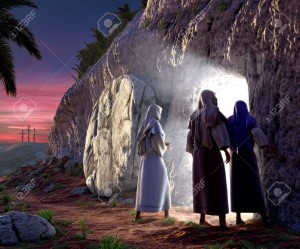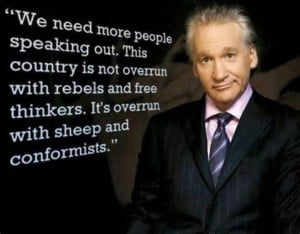 As part of Patheos’ Easter coverage, some of us are pondering what that morning would have been like for the witnesses of the Resurrection. This is my contribution. For more ‘accounts’ and other resources for Holy Week, visit the Patheos Engaging Easter page here.
As part of Patheos’ Easter coverage, some of us are pondering what that morning would have been like for the witnesses of the Resurrection. This is my contribution. For more ‘accounts’ and other resources for Holy Week, visit the Patheos Engaging Easter page here.
It was dark as ink and chillingly quiet as Mary Magdalene felt her way to the tomb that early morning. She was desperately looking for something that would answer her questions. Finding and treating the body of Jesus was important for social and religious traditions of the time. She wanted to honor him, but that was on some level a technicality.
She was really seeking his essence — what Jesus was made of, what he stood for, what he represented, what he fought for: freedom, equality, dignity, wisdom, courage, compassion. The realized potential and rightful place of all people. Real, full life as God meant it to be. She had to find him so that she could receive something from him.
When she discovered he was missing from the tomb, she ran back to tell Peter and John. They came again with her to look. John 20 says they did not know Jesus would rise from the dead. The men turned quickly and went back to where they were staying.
Mary, however, was not about to leave. This could not be it. She knew Jesus; she knew there would be more to this. He had come to change the world, to make the last first, to free the captives and restore sight to the blind. He declared the jubilee when all people would be restored to their full humanity in community, and injustices reconciled. Maybe it was because she was a lowly, silenced woman in a violent, oppressive society that she would not let this go. It meant life or death on every level.
 Maybe it was because of this that Jesus waited until the men left to show himself to Mary alone. She didn’t recognize him when she saw him standing there because it wasn’t about his body, it wasn’t about protocol, tradition or religion. It was about human suffering and the battle for redemptive change. She told the gardener about her anxiety and loss of hope over the absence of Jesus, the one she boldly, treasonously held as Lord above Caesar, the only one who was fighting to save her.
Maybe it was because of this that Jesus waited until the men left to show himself to Mary alone. She didn’t recognize him when she saw him standing there because it wasn’t about his body, it wasn’t about protocol, tradition or religion. It was about human suffering and the battle for redemptive change. She told the gardener about her anxiety and loss of hope over the absence of Jesus, the one she boldly, treasonously held as Lord above Caesar, the only one who was fighting to save her.
Alone with her, Jesus intimately called her by name. She responded, Teacher! She received the Easter Christophany that his essence would never leave, but guide those who would truly follow not a religion, but a commitment to bring the realm of God by opening our eyes to harsh reality and sacrificing the status quo in the name of freeing people. The lion and the lamb –the ruling class and powerful, alongside the vulnerable, used and consumed– coming together empathically, peaceably and equally in a new, shared vision for the world.
This Easter interaction was a radical statement, politically and not just spiritually. It was not about belief, but action.
Jesus did not give Peter (supposedly the rock upon which the church would be built) or John (the ‘disciple Jesus loved’) the vision of new life. He gave it to someone society would never believe…a woman, barely above the animals in trade value, who would not be seen by the world as a reliable witness, who was not supposed to speak in public to men who were not related, who was covered by a veil by men who suppressed and undervalued her.
Yet she was the one to whom Jesus revealed himself. She was the one he wanted to witness the resurrection. It wasn’t about belief — in her very being there she already believed. It was about action. She fearlessly took the news back to Jesus’ “brothers”.
Mark sells it quite differently, maybe to get 1st century men more on board. Mary, the mother of Jesus, and Salome are with Mary Magdalene. They do not see Jesus, but a young man dressed in a white robe tells them he is risen and gone to Galilee, and to go tell the guys he’ll meet them there. But Mark says the women were too terrified to breathe a word.
Some early copies of the Gospel of Mark end there. The writer/editor(s) betrays Jesus’ counter-intuitive way by denying the women the resurrection. He succumbs to what society will accept and believe: that this is a man’s world and a man’s movement; women are weak, trembling and bewildered, not to be relied upon. Never mind that the women were the ones who stayed at the gory, politically fraught cross while the men fled; and who rose before dawn to take a dangerous journey to the tomb of one who had been executed as a despised dissident by a powerful, vengeful empire who would as soon nail them to their own crosses as blink an eye.
The women together were a courageous symbol of Jesus’ impactful uprising, and the truth of his vision and mission. They would not let Jesus die alone. They would not let his spirit, his essence die.
Other manuscripts of Mark continue on with verses 9-20, which corroborate that Jesus appeared first to Mary, but that when she told the disciples, they did not believe her. Later, Jesus shows up and rebukes them for this disbelief in her and in his resurrection. They did not even believe Jesus himself.
Easter reminds us that women have to both take a journey by ourselves, and we have to take one together with other brave women. We do it for ourselves, for others, and for the healing of our biased and brutal society. In our darkest moments, in the still silence, we will hear the essence call us by name, give us our vision to see things as they are and fight for another reality. We each have to believe what we think the world can be, and decide what we are willing to sacrifice and risk to create this change through action.
Easter means that together, in our collective strength, raised voices and contributions of diverse talents, we will bring the realm of God: equality, justice and wholeness for all. We can’t ignore what’s happening in our country, and to women and girls around the world, or resign ourselves to the patriarchal political lie that women are already fully believed and treated as equals.
We have to go there, all the way there, to the universal place of violence, oppression and death. We have to go to the tomb every day. We have to force ourselves to stand there until angels appear and the essence returns to restore our sight, fill us with fight. Each of us –in every culture, status, and condition around the world– is the eternal witness to the resurrection. Jesus left it with us to tell the world and make it so.
Rev. Jennifer D. Crumpton is the author of Femmevangelical: The Modern Girl’s Guide to the Good News.












